Heart Transplant: Lessons from the Heart
Meet Lanayah
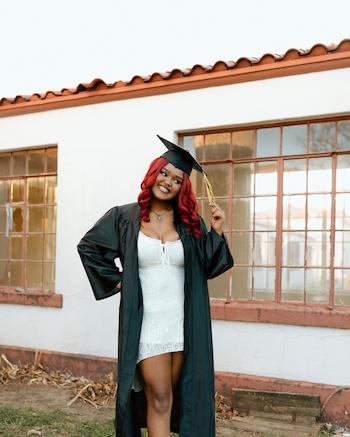
Then and Now: Lanayah’s Transplant Story
Lanayah Rivera was a 13-year-old basketball player who had helped her Newton, Kansas, middle school B-team go 12-1 the previous season when she started having trouble breathing and experiencing fatigue. Her symptoms were chalked up to asthma and then pneumonia, which her older sister, Aliyana, just had.
But Lanayah’s mom, Pamela, thought something else was wrong. She pushed for answers and got them: A chest X-ray and echocardiogram showed Lanayah’s heart was enlarged. She was flown from Wichita to the Ward Family Heart Center at Children’s Mercy Kansas City on November 13, 2019. There was a familiar face waiting for her: her aunt Mindy Smith-Moore, a Children’s Mercy social worker at the time.
Lanayah was diagnosed with dilated cardiomyopathy a few days later. Her left ventricle had gotten too big to pump blood to her body efficiently. Lanayah’s care team formed a treatment plan and allowed her to return home with medications and a no-basketball rule.
Unfortunately, Lanayah continued experiencing complications. She was back in Children’s Mercy for Christmas, home for New Year’s, and re-admitted in early January 2020. Her doctors told her it was time to consider a heart transplant.
A big decision
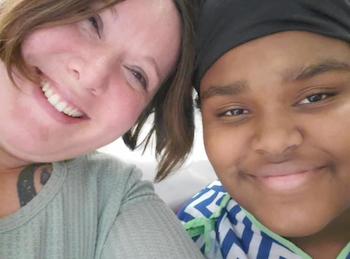
“They asked me: ‘It’s ultimately up to you. Do you want a transplant?’” remembered Lanayah. “I said yes.” She was exhausted, on sodium and water restrictions, and in pain. “I didn’t realize how fast I was deteriorating,” she said.
“Lanayah was very courageous,” said Brian Birnbaum, MD, FACC, FAAP, Heart Center physician. “There was a lot going on, but she always had the attitude of ‘I'm going to do this.’”
Lanayah went on the transplant list on January 16. “They found a heart for me on January 20, 2020,” said Lanayah. Friends and family all across the Midwest were already on their way to visit. Lanayah got to see them all (and eat a big bowl of ramen!) before going into surgery prep. The transplant went well. She was foggy for a few days post-surgery but remembers waking up frustrated with her tubes and IVs.
“One of the first things I remember finding out when I woke up was that Kobe had passed away, and I didn’t think it was real,” said Lanayah. She remains a Lakers fan, but she also discovered a love for football while in the hospital.
Because tigers are her favorite animal, she started watching Louisiana State University games to pass the time. She quickly became a Joe Burrow fan. LSU won the national championship that season...and that was a problem: “I couldn’t watch any of the games because my heart rate would get too high,” Lanayah laughed. She’d track scores online instead but still managed to set off heart-rate alarms. Just like Burrow, she’s still a tiger. “I’m a Bengals fan now; it’s hard for people in Kansas to understand.”
Post-transplant, Lanayah was determined not to spend her Valentine’s Day birthday in the hospital, so she focused on her recovery.
“There were a bunch of new challenges I had to face,” said Lanayah. She needed hand physical therapy due to steroid side effects and was diagnosed with diabetes, which can be caused by anti-rejection medicines. “My stamina was so low. It took an army of 10 people for me to go on a walk. That was really funny to me.”
Recovery during the pandemic era
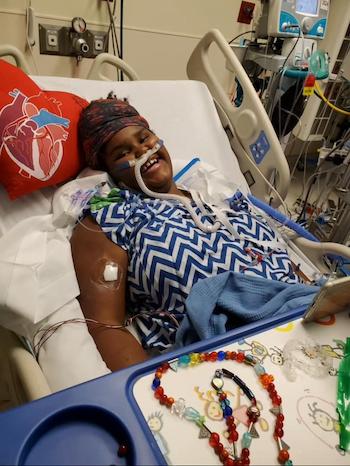
When Lanayah was discharged, she lived with Mindy in Kansas City for three months. She was able attend follow-up appointments twice a week, and her friends traveled to celebrate her birthday with her.
“My aunt was amazing,” Lanayah said. “I don’t know how my first few months would have been without her.”
Lanayah began her new life as a transplant recipient right when the rest of the world began to fall apart. Her post-transplant immune protection coincided with the highly politicized early era of the pandemic. She didn’t like going out in public with a mask; it drew too much negative attention. “I had a heart transplant four weeks ago,” she would tell belligerent strangers. “I’m just trying to survive.”
Lanayah was able to go home to Newton in April of 2020. The community organized a drive-by welcome for her to celebrate. She was very glad to be home with Aliyana and her dogs, but she still had uphill battles to face.
New life, new challenges
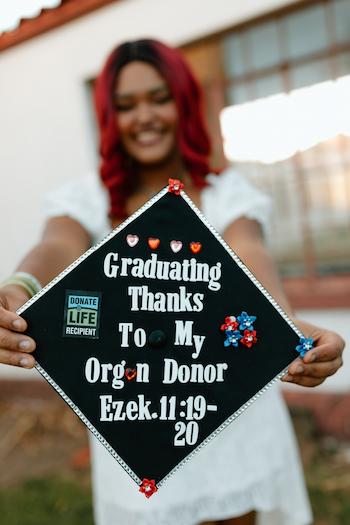
“My diabetes has been a huge challenge these past few years,” said Lanayah. “It’s a really hard process to figure out what your body needs.”
Lanayah says endocrinologist Jennifer Boyd, DO, has been helpful as she learned to manage her insulin levels and use new diabetes technologies.
“Lanayah has been a joy to get to know and talk to over the years,” said Dr. Boyd. “It takes a lot of work to monitor blood sugars and calculate insulin doses. Lanayah's blood sugars have evolved over time, and we have worked to support changes in her regimen that best fit her lifestyle.”
Lanayah also leaned on Jami Gross-Toalson, PhD, Heart Center clinical psychologist, during the past five years.
“I had a complete life change, and I’m still adapting,” said Lanayah, who began missing school her sophomore year because of mental health issues. “I have major depressive disorder and anxiety, which is hard for me to come to terms with. But if I admit to myself that I went through this, and that’s why I feel this way, it’s easier.”
“Most patients struggle with the emotional and mental aspect of transplant at some point in the process,” said Dr. Gross-Toalson. “Lanayah has always reached out for help in making those issues manageable and has never minimized her mistakes. Rather, she has used them as stepping stones for her future.”
"When I think of Lanayah, I think about resilience”
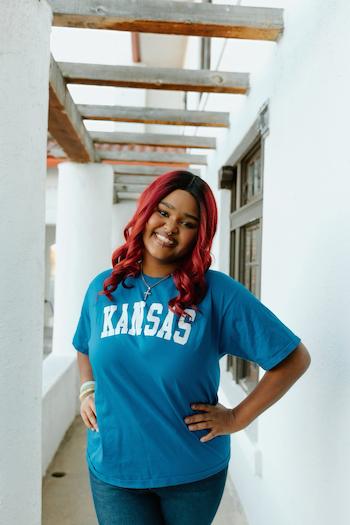
Lanayah regained her academic spark after transferring to the Opportunity Academy, an alternative school that uses trauma-informed principles and customized learning tools. She retook the classes she had missed, got her grades back up and was accepted to the University of Kansas. She’ll become a Jayhawk this fall and plans to study sports journalism.
Her ultimate goal? Manage social media for a football team and continue to raise cardiac arrest awareness. She currently works with the American Heart Association in Kansas to teach people cardiac warning signs and be heart-health proactive.
“My mom taking me to get a chest X-ray saved my life,” said Lanayah. Sudden cardiac arrest is a possibility with dilated cardiomyopathy; Lanayah said it could have happened to her on the basketball court. “I would have gone back to sports, and we never would have gotten to Children’s Mercy. That’s very real and very scary.”
“Lanayah has done a great job of advocating for herself, but also being a role model and advocate for other young people with heart disease,” said Dr. Birnbaum. “We love seeing patients like Lanayah thrive following transplant. It’s a team effort, and Lanayah and her family have been great teammates during this process.”
Today, Lanayah goes to multidisciplinary follow-up appointments every three months and is beginning to take charge of her own medical care. She says her support system, (including a friend who has also had a heart transplant) and a good attitude helped her recovery. “And I couldn’t have done any of this without the support of mom,” she said.
Lanayah encourages other transplant patients to be patient with themselves.
“Know there’s always going to be people around you who are going to help you,” said Lanayah. “Your doctors — or my doctors at least! — are amazing. They’re always there to help and talk about things.”
“When I think of Lanayah, I always think about resilience,” echoed Dr. Gross-Toalson. “She never gave up, and that has led her to be an amazing young woman — not just in spite of, but because of her transplant experience.”
